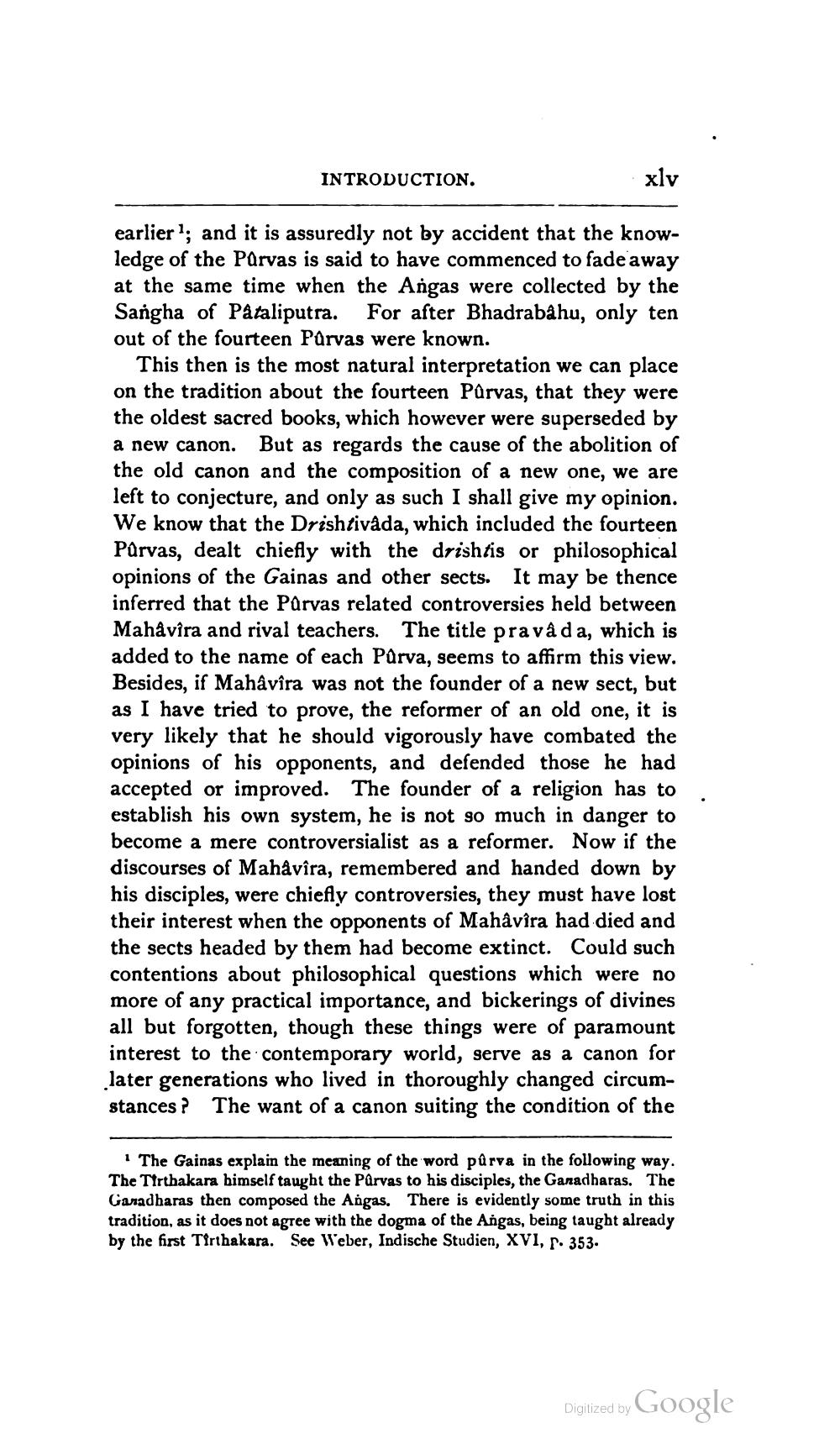________________
INTRODUCTION.
earlier'; and it is assuredly not by accident that the knowledge of the Pārvas is said to have commenced to fade away at the same time when the Angas were collected by the Sangha of Pataliputra. For after Bhadrabahu, only ten out of the fourteen Parvas were known.
This then is the most natural interpretation we can place on the tradition about the fourteen Purvas, that they were the oldest sacred books, which however were superseded by a new canon. But as regards the cause of the abolition of the old canon and the composition of a new one, we are left to conjecture, and only as such I shall give my opinion. We know that the Drishtivada, which included the fourteen Parvas, dealt chiefly with the drishtis or philosophical opinions of the Gainas and other sects. It may be thence inferred that the Parvas related controversies held between Mahåvira and rival teachers. The title pravå da, which is added to the name of each Parva, seems to affirm this view. Besides, if Mahâvîra was not the founder of a new sect, but as I have tried to prove, the reformer of an old one, it is very likely that he should vigorously have combated the opinions of his opponents, and defended those he had accepted or improved. The founder of a religion has to establish his own system, he is not so much in danger to become a mere controversialist as a reformer. Now if the discourses of Mahâvîra, remembered and handed down by his disciples, were chiefly controversies, they must have lost their interest when the opponents of Mahavira had died and the sects headed by them had become extinct. Could such contentions about philosophical questions which were no more of any practical importance, and bickerings of divines all but forgotten, though these things were of paramount interest to the contemporary world, serve as a canon for later generations who lived in thoroughly changed circumstances ? The want of a canon suiting the condition of the
1 The Gainas explain the meaning of the word půrva in the following way. The Tirthakara himself taught the Pârvas to his disciples, the Ganadharas. The Ganadharas then composed the Angas. There is evidently some truth in this tradition, as it does not agree with the dogma of the Angas, being taught already by the first Tirthakara. See Weber, Indische Studien, XVI, r. 353.
Digitized by Google




